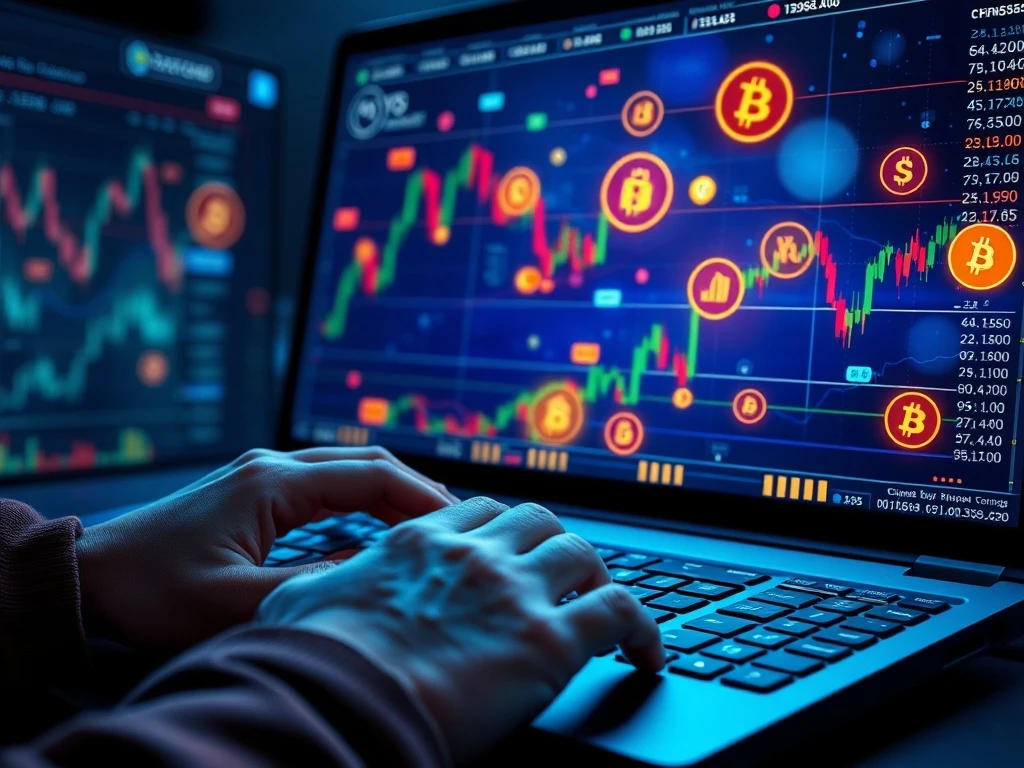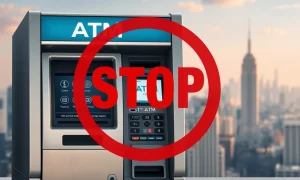Leverage trading in crypto presents both incredible opportunity and significant risk. Many see it as a fast track to amplified gains. You borrow capital, open larger trades, and hope the market moves favorably. However, without a deep understanding, it can wipe out your account just as quickly. Despite the dangers, this is not a niche activity. According to The Block, monthly Bitcoin futures volume on centralized exchanges averages over $2 trillion. This indicates high-stakes activity from experienced traders who fully understand the risks. Every professional trader started somewhere. They have faced losses and liquidations. The key difference is, they learned the rules before committing significant capital. This guide is your starting point: a comprehensive beginner’s introduction to leverage trading in crypto.
What is Leverage Trading in Crypto?
Leverage trading in crypto involves using borrowed capital to open positions larger than the amount held in a trader’s account. Essentially, it allows individuals to gain exposure to bigger trades without funding the entire position themselves. The exchange typically provides the borrowed portion. A deposit, known as margin, secures this loan. For example, if a trader puts up $100 and uses 10x leverage, they control a $1,000 position. Gains or losses apply to the entire position size, not just the initial $100. This makes it a powerful tool for amplifying returns. Conversely, a small market move in the wrong direction can quickly lead to liquidation, especially with high leverage. Not all platforms offer the same limits. Some cap leverage at 2x or 5x. Others go much higher, sometimes 100x or even 500x. More leverage offers greater potential for growth, but it also reduces your margin for error. Therefore, robust risk control is paramount when trading with borrowed funds.
Key Terms for Successful Leverage Trading
To become a proficient trader, understanding the specialized terminology is crucial. Concepts like initial capital, appropriate leverage levels, and portfolio risk are all condensed into technical terms. Familiarity with these terms simplifies the entire process. Let’s explore these essential definitions.
Understanding Margin Types for Leverage Trading
When engaging in leverage trading, how your capital is managed behind the scenes significantly impacts risk. Margin types offer different approaches to risk management:
- Isolated Margin: This type limits risk to a specific amount allocated for a single position. If the trade moves unfavorably, only the assigned margin is affected. The rest of your account remains untouched. Consequently, isolated margin suits testing new strategies or managing exposure in volatile markets.
- Cross Margin: In contrast, cross margin treats your full account balance as shared collateral across all open positions. Profits from one position may offset losses in another. This structure reduces the likelihood of immediate liquidation. However, it introduces significantly more risk. When all positions are linked, a single trade, especially one with excessive leverage, can jeopardize your entire portfolio. This flexibility comes at the cost of exposing a greater portion of your funds to market fluctuations.
Traders should select a margin type based on their objectives and experience level. Isolated margin provides clarity and control, allowing you to define exactly how much capital is at risk per trade. Cross margin offers more flexibility but increases the chances of a larger loss if positions are not actively monitored. In practice, one poor decision under cross margin can result in the loss of your entire balance.
Account Margins in Leverage Trading
In leverage trading, margin refers to the capital a trader must provide to open and maintain a position. Two primary types are essential to understand:
- Initial Margin: This is the minimum amount required to open a leveraged trade. It is calculated based on your chosen leverage size and the total position value. Higher leverage means a lower initial margin requirement. However, it also means less buffer before potential liquidation.
- Maintenance Margin: This is the amount you need to keep the position active. If your position’s value falls and your margin drops below this level, the exchange will begin reducing or closing the position. This action prevents further losses.
Liquidation: The Risk in Leverage Trading
Liquidation occurs when your position’s value drops so significantly that the exchange is compelled to close it. This typically happens when your margin balance falls below the required maintenance level. Most traders view liquidation as a failure. Yet, it is simply the system operating as programmed. It limits losses beyond what you can afford. The closer you are to maximum leverage, the smaller the market move needed to trigger liquidation. Therefore, understanding this mechanism is vital for any participant in leverage trading in crypto.
How Does Leverage Trading Work in Practice?
Leverage trading follows a precise step-by-step process. Understanding each component is key to successful initial trades or, at minimum, gaining valuable learning experiences. First, you deposit funds into your exchange account. This deposit becomes your margin, the collateral that allows you to borrow additional capital from the platform. The amount you can borrow depends on your chosen leverage ratio. For instance, 10x leverage means you control 10 times more than your initial deposit. If you fund $500, you are trading with $5,000.
Once your account is funded, you select a trading pair, such as BTC/USDT. Next, you choose your leverage and set your position size. However, this is not a random guess. Every trade should be backed by a clear risk plan. This plan must address several critical questions: How much of your account are you risking? Where is your stop-loss order placed? What happens if you are wrong ten times consecutively? Most beginners fail to plan this far ahead. Yet, if you are using leverage, you must. Risking 5% of your capital per trade might seem acceptable initially. However, ten consecutive losing trades at that level can halve your account. Recovering from such a drawdown is extremely difficult. This is precisely why seasoned traders rarely risk more than 1%–2% on a single trade.
As the market moves, the exchange continuously monitors your collateral. If the trade goes against you and your margin balance drops below the maintenance margin, the platform will liquidate your position. This means the system forcibly closes your trade to prevent further losses. Consequently, your collateral is partially or fully wiped out. Most beginners focus solely on potential gains if they are right. Conversely, professionals work backward from the worst-case scenario. They calculate their maximum acceptable loss, how often they can afford to be wrong, and whether the potential upside justifies the inherent risk. Once these fundamentals are established, the real learning truly begins.
Paper trading offers a smart starting point. Alternatively, for a more realistic environment, many leading crypto leverage trading platforms provide demo accounts. These allow you to build confidence without risking real capital. However, live trading introduces more variables. Funding rates can silently drain your margin. Shifts in open interest can trigger unexpected volatility. Liquidation spikes, macro news events, and exchange-specific data all influence the outcome. Success is not merely about placing the trade. It is about learning to maintain control once the trade is live.
Is Leverage Trading Right for You?
That depends entirely on your approach. Leverage can open significant doors, but it closes them just as fast if you are careless. It is not about being fearless; it is about knowing your limits. If you are willing to plan meticulously, manage risk properly, and avoid betting your entire account on one move, then you might be ready to test it. Keep your exposure small initially. Learn to absorb losses without panicking; this is a fundamental part of the game. Start slowly and build up your experience. The ultimate goal is not to trade large positions immediately. Instead, it is to remain in the game long enough to continuously improve your skills.
Frequently Asked Questions (FAQs) About Leverage Trading in Crypto
What is leverage trading in crypto?
Leverage trading in crypto allows you to trade with more capital than you actually possess. You borrow funds from an exchange to amplify your potential gains. For example, 10x leverage means you control a position 10 times larger than your initial investment.
How does liquidation work in leverage trading?
Liquidation occurs when your losses on a leveraged position cause your margin balance to fall below the exchange’s required maintenance margin. The exchange automatically closes your position to prevent further losses, and you lose your initial margin or a significant portion of it.
What is the difference between isolated margin and cross margin?
Isolated margin dedicates a specific amount of capital to a single position, limiting your risk to that amount. Cross margin uses your entire account balance as collateral for all open positions, meaning a loss on one trade could affect your entire portfolio, but it also offers more flexibility to avoid immediate liquidation.
Is leverage trading safe for beginners?
Leverage trading is highly risky, especially for beginners. It can amplify both gains and losses. Beginners should start with very small amounts, practice with demo accounts, and thoroughly understand risk management principles before engaging in live leverage trading.
How can I practice leverage trading without risk?
Many cryptocurrency exchanges offer demo accounts or paper trading features. These allow you to simulate live trading conditions using virtual funds, enabling you to practice strategies and understand market dynamics without risking any real capital.
What are the key risks associated with leverage trading in crypto?
The primary risks include rapid liquidation, amplified losses, and the potential for market volatility to quickly move against your position. High funding rates and unexpected market events can also significantly impact your trades. Proper risk management, including stop-loss orders, is crucial.
























